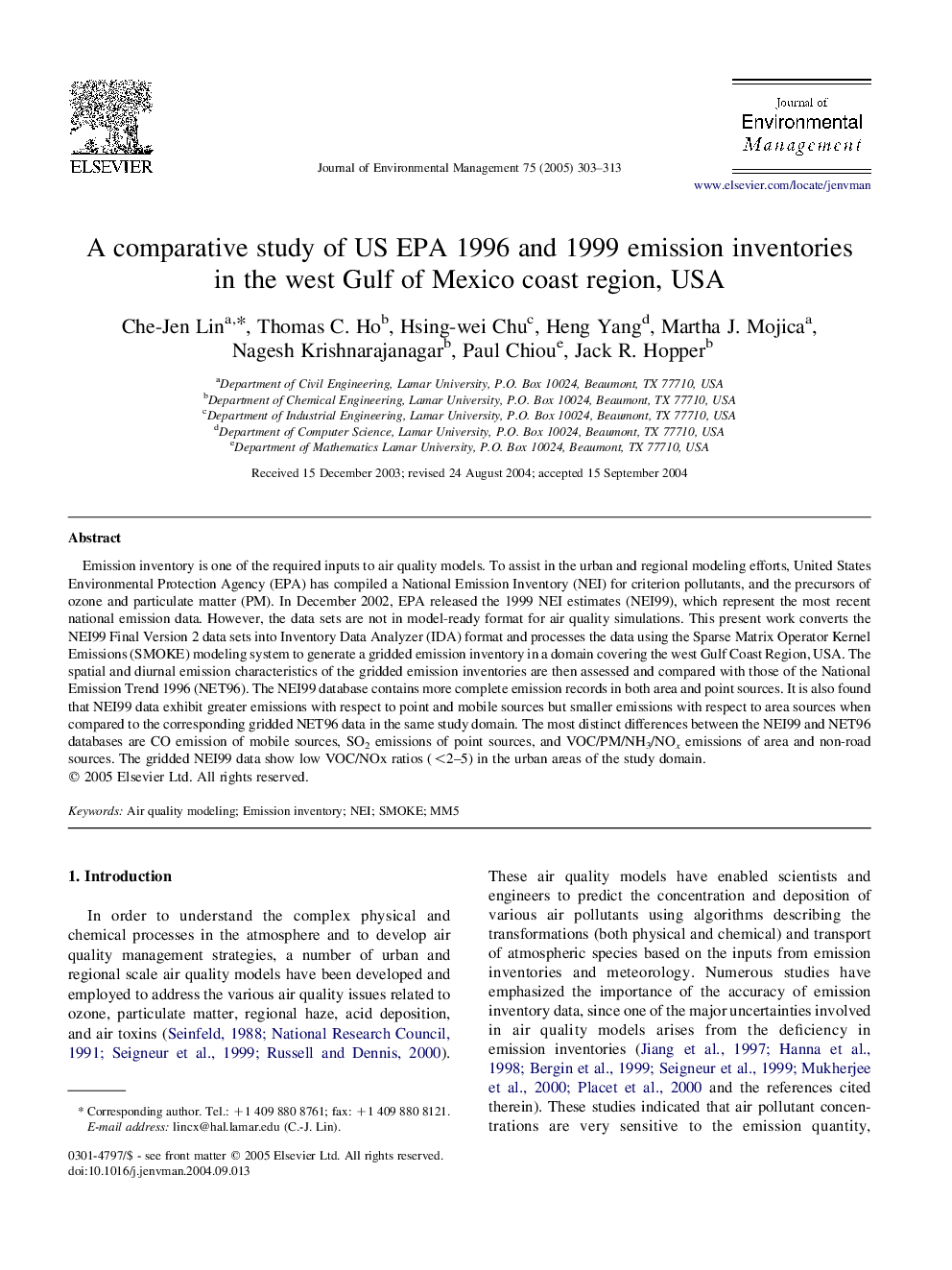| Article ID | Journal | Published Year | Pages | File Type |
|---|---|---|---|---|
| 10505891 | Journal of Environmental Management | 2005 | 11 Pages |
Abstract
Emission inventory is one of the required inputs to air quality models. To assist in the urban and regional modeling efforts, United States Environmental Protection Agency (EPA) has compiled a National Emission Inventory (NEI) for criterion pollutants, and the precursors of ozone and particulate matter (PM). In December 2002, EPA released the 1999 NEI estimates (NEI99), which represent the most recent national emission data. However, the data sets are not in model-ready format for air quality simulations. This present work converts the NEI99 Final Version 2 data sets into Inventory Data Analyzer (IDA) format and processes the data using the Sparse Matrix Operator Kernel Emissions (SMOKE) modeling system to generate a gridded emission inventory in a domain covering the west Gulf Coast Region, USA. The spatial and diurnal emission characteristics of the gridded emission inventories are then assessed and compared with those of the National Emission Trend 1996 (NET96). The NEI99 database contains more complete emission records in both area and point sources. It is also found that NEI99 data exhibit greater emissions with respect to point and mobile sources but smaller emissions with respect to area sources when compared to the corresponding gridded NET96 data in the same study domain. The most distinct differences between the NEI99 and NET96 databases are CO emission of mobile sources, SO2 emissions of point sources, and VOC/PM/NH3/NOx emissions of area and non-road sources. The gridded NEI99 data show low VOC/NOx ratios (<2-5) in the urban areas of the study domain.
Related Topics
Physical Sciences and Engineering
Energy
Renewable Energy, Sustainability and the Environment
Authors
Che-Jen Lin, Thomas C. Ho, Hsing-wei Chu, Heng Yang, Martha J. Mojica, Nagesh Krishnarajanagar, Paul Chiou, Jack R. Hopper,
